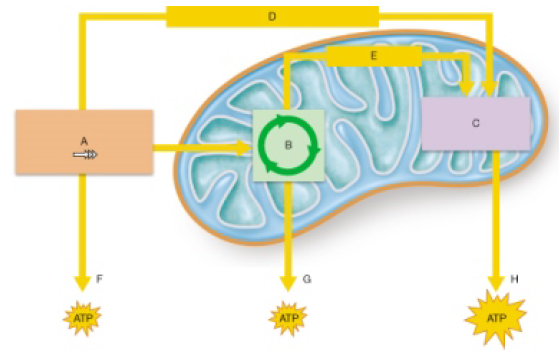Compare and contrast the processes of facilitated diffusion and active transport. What will be an ideal response?
Concepts to Consider: Facilitated diffusion always occurs along the concentration gradient of the
substance being transported, while active transport occurs against a concentration gradient; facilitated
diffusion does not require a direct expenditure of energy, but rather an indirect expenditure, while
active transport requires direct expenditure of energy in the form of hydrolysis of ATP; both processes
require the assistance of membrane proteins that act as channels through which the molecules being
transported will pass.
You might also like to view...
Which of the following is a true statement regarding the reactions indicated by the letters F and G?

a. Both reactions involve the transfer of electrons from an organic substrate to the molecule ATP.
b. Together, the reactions indicated by the letters F and G produce most of the ATP synthesized during cellular respiration.
c. Both reactions include the synthesis of ATP powered by the diffusion of H+ ions.
d. Both reactions involve the transfer of a phosphate group from an organic substrate to ADP.

A. A B. B C. C D. D E. E
Restriction enzymes are mainly derived from:
A) fungi. B) animal cells. C) yeast. D) bacteria.
How are extinctions related to biodiversity?
a. the earth's biodiversity is a result of the relationship between alpha and omega b. extinctions are less important to biodiversity because extinctions are negative d. extinctions can decrease standing diversity but not biodiversity c. extinctions always lead to a decrease in biodiversity because extinctions are negative e. both a and b explain the relationship between extinctions and biodiversity